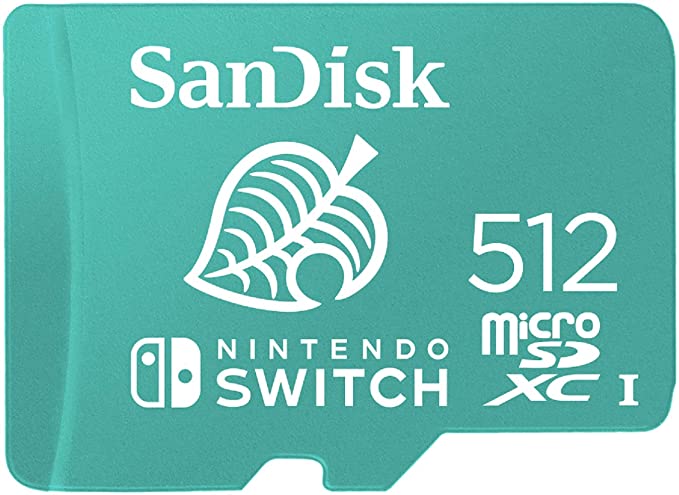SDCard guide
The Nintendo Switch natively has a storage space limited to 32 GB internally. However, the console is equipped with an expansion slot that can accommodate a microSD card to increase storage capacity. You can store more backups, screenshots or videos for example.

Nowadays, one can find memory cards of all kinds of different shapes and capacities that plug into many devices such as cameras, phones, gps navigation systems and in our video game consoles too. As if that wasn't enough, there are also different classifications depending on the speed of writing or reading. However, not all cards are compatible with the Nintendo Switch.
But why would you want to use extra storage space? If there are several of you playing on your console or if your game library is large, the internal memory will quickly become full. Having enough to store the data on another medium guarantees you can continue to play as you want.
So, how do you choose the right microSD card?


The formats
There are three SD card formats :
- The SD card. It is the very first format to appear in the early 2000s, manufactured by the trio SanDisk, Matsushita and Toshiba. This format is the largest of all, with dimensions of 24mm x 32mm x 2.1mm.
- The MiniSD card. This format, created in 2003, is derived from the classic SD card. Smaller in size, it was designed mainly for cell phones. Its dimensions are 20mm x 21.5mm x 1.4mm.
- The microSD card. Latest generation of card, even smaller in size 15mm x 11mm x 1mm. This format is fully compatible with MiniSD and SD cards via an adapter.
The only format that is supported by Nintendo Switch is the microSD card. You have an overview of the different visuals on the diagram beside.
The capacities
Storage capacity is the amount of informations that can be written to the card. Via the Nintendo eShop, you have the possibility to make electronic purchases, such as games or DLC. Their size can vary from ten MB to more than 16 GB. In addition, game save data, screenshots and videos can take up space very quickly. This information must be taken into account when choosing the capacity of the card.
There are several types of microSD cards:
- SD offers a capacity of up to 2GB
- SDHC offers a capacity ranging from 2GB to 32GB
- SDXC offers a capacity ranging from 32GB to 2TB
- SDUC offers a capacity ranging from 2TB to 128TB. This format is not supported by the Nintendo Switch!
For SDXC formats, a console update is definitely required.


The file system
Before you can use the memory card on your Switch, you must first "format" it. This operation initializes the file system on the memory card so that the console can access it. A file system is the way to store and organize information. The very important point to know is that formatting completely erases the memory card! It will be very difficult or impossible for you to recover the data that was there. So make sure you have a backup before.
Several file systems are available, but only two are to be used on the Switch:
- FAT32: File system whose file size must be less than 4GB. So, you may run into problems if you store large downloads or updates from the internet.
- exFAT: You will probably need to upgrade the Switch to use this filesystem. However, you will not have the file size constraint.
You can consult our guide on the RCMloader in order to know how to set it up.
The speed ratings
The second factor to take into account is the access time in writing and reading to the card. To enjoy the best gaming experience, we recommend that you use a microSD card with a high transfer speed. There is a standard that normalizes write speeds via an index:
- Class 2: minimum 2MB/s
- Class 4: minimum 4MB/s
- Class 6: minimum 6MB/s
- Class 10, UHS Class 1 or V10: minimum 10MB/S
- UHS Class 3 or V30: minimum 30MB/s
- V60: minimum 60MB/s
- V90: minimum 90MB/s
The best microSD cards
Here is our selection of officially licensed Nintendo Switch microSD cards that offer incredible speeds. Spend less time waiting and more time playing games with read speeds of up to 100MB / s and write speeds of up to 90MB / s.
Our advices
Important: Before inserting or removing a microSD card, always make sure to properly power off your Switch by pressing the POWER button for at least three seconds, then selecting “Power Options”> “Power Off”. Otherwise you risk corrupting the data on the card! It would be a shame to lose all your backups and start over...
MicroSD cards are very fragile. Please handle them with care and respect the direction of connection in the console. In addition, when you are not using your memory card, remember to store it in a clean and dry place in order to preserve it as much as possible. For this you can consult our advice on the best protective equipment for the Switch.


